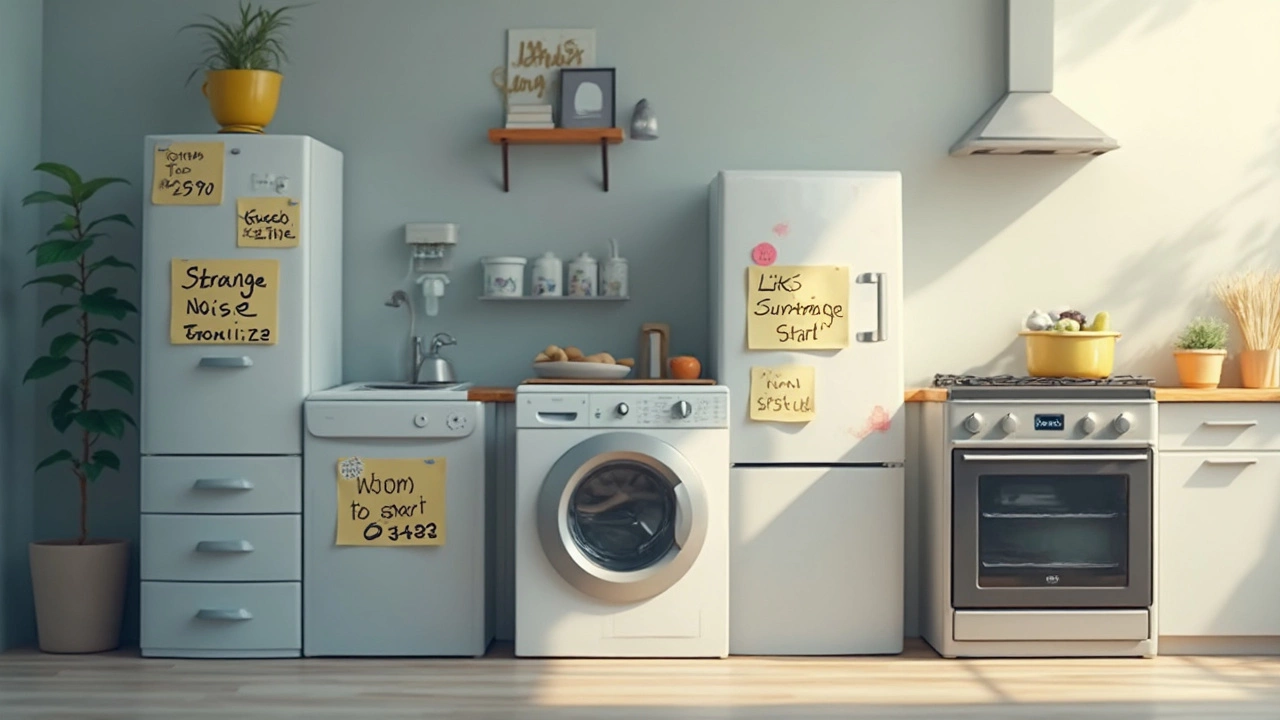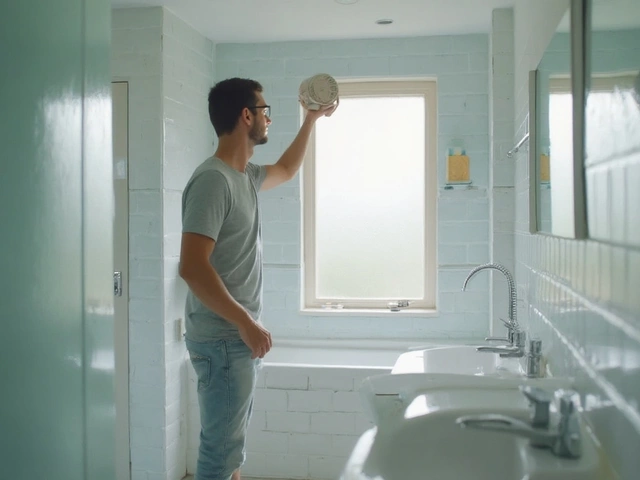Picture this: your fridge hums weirdly, your washing machine spits water, or maybe your oven just gave up on baking—again. Before you grab your phone to call for help, think about what info you actually need to share. A clear, detailed description isn’t just helpful—it’s the secret to faster, better repairs.
You don’t need to know everything about how it works. What you need is the basics: the brand, the model (usually found on a sticker inside or on the back), and what exactly is happening. Is your dishwasher leaking from the door or just not starting at all? Does the dryer heat up but never tumble, or is it totally dead? The more specific you are, the less guessing the technician has to do.
Starting with the simple facts—like the sounds, the smells, any flashing lights, or when the problem started—will get you way further than saying, “It’s just broken.” Even old appliances follow the same logic. Your honest, clear explanation gets your fix moving faster. Want your next appliance service visit to go smoothly? Start with the right description.
- Why Accurate Appliance Descriptions Matter
- Spotting the Key Details
- How to Explain Common Appliance Problems
- Example Descriptions That Get Results
- Mistakes to Avoid When Reporting Issues
Why Accurate Appliance Descriptions Matter
If you’ve ever had a technician show up and scratch their head for an hour, you know why explaining the problem clearly is a big deal. The main reason? Good communication saves everyone time, money, and frustration. When you give a clear and accurate description, technicians don’t have to play detective or take random guesses. They show up with the right parts, the right tools, and a game plan that actually fits your problem.
Almost 60% of service delays happen because the service team didn’t get enough information about the issue ahead of time. Imagine you just say “my dryer’s busted.” That’s not enough for anyone to work with. But if you say “My Samsung dryer, model number DV45K6500EV, won’t spin but the power turns on and I smell burning,” you’ve just given key clues. Now the team can check for a broken belt or a motor problem, not just show up empty-handed.
Sometimes, something as simple as sharing those weird flashing lights or beeping patterns can help a lot. A lot of modern appliances have error codes, and reading those right off the display often points directly to the problem. If your washing machine is showing “E21,” that’s much more useful than “it stopped working.”
- Specifics like model and serial numbers help find the right replacement parts on the first visit.
- Describing sounds (like grinding or buzzing) tells the tech where to look first.
- Mentioning leaks or weird smells can narrow down issues to pumps, seals, or electrical parts.
A clear appliance description is your shortcut to faster repairs, fewer return trips, and getting life back to normal. The more details you share, the better your odds of a quick fix.
Spotting the Key Details
Describing your appliance for a service call is a bit like giving directions—you want the other person to get there without taking a wrong turn. Don’t worry, you don’t need to be an expert. Start by noticing and noting the stuff the technician will actually ask about. Here’s what usually matters most:
- Brand and model number: These two are the golden ticket. Technicians can’t even order the right part or look up common problems without this info. Look for a sticker or metal plate—inside dryer doors, behind fridge crispers, or under your cooktop’s lid.
- Serial number:
- Age of the appliance (if you know it):
- Type and color of appliance:
- Exact symptoms: Is it making noise, leaking, not heating, displaying error codes, or just dead?
- When the problem started and if it’s constant or comes and goes:
- Anything unusual you noticed lately (buzzing, burning smells, tripped breakers):
You’d be surprised—according to the 2024 ServiceBench Appliance Report, over 60% of delayed repairs boil down to poor or missing descriptions. It’s that common. Here’s a quick reference:
| Key Info | Where to Check | Why It Matters |
|---|---|---|
| Brand/Model | Inside door, back, bottom, or user manual | Parts matching, technical guidance |
| Serial Number | Same as model whereabouts | Warranty and age verification |
| Symptom Details | Your own observation | Pinpoints the likely problem |
| Error Codes | Display panel or blinking lights | Saves time on troubleshooting |
Why sweat these details? Because when you give a tight description—like, “My Samsung dryer, model DVE45T3200W, hums but won’t spin, starts showing code DC”—you save the tech from guesswork and get your appliance fixed sooner. Missing info means added calls, wrong parts, and wasted time. So jot those details down before you even pick up the phone or fill out an online service form.

How to Explain Common Appliance Problems
When something goes wrong at home, people usually say, “My fridge stopped working” or “The washer is broken.” That’s a start, but technicians need more. The trick is describing symptoms like you’re telling a friend—skip the fancy words, focus on what you actually see, hear, or smell.
Here’s what makes a difference. Start with WHERE you notice the problem, WHAT exactly is wrong, and WHEN it happens. For example: “The washing machine shakes like crazy during spin cycle” explains a lot more than just “It doesn’t work.”
Be specific about:
- Noises (banging, buzzing, grinding, or silence)
- Leaks (where’s the water showing up? Under the door, at the back?)
- Lights or error codes (is the check filter light on? Is the panel blinking?)
- Does the problem happen every time, or only with certain settings?
- Has anything changed lately (power surge, moved the appliance, new installation)?
Different appliances have common headaches. Here’s a quick breakdown, so you can easily compare what to mention:
| Appliance | Typical Problems | Most Useful Details to Share |
|---|---|---|
| Refrigerator | Not cooling, weird noise, leaking water | Temps, sounds, where leaks are, odd smells |
| Washing Machine | Shakes, won’t drain, error on display | Cycle involved, error code, when it stopped, water left inside |
| Dishwasher | Not draining, water left behind, won’t start | Noises, status lights, cycle used, door seals |
| Dryer | Not heating, drum won’t spin, too loud | Sounds, heat settings, any new smells, lint buildup |
| Oven | Doesn’t heat, uneven cooking, error code | Controls used, noises, any display messages |
Bring up details with real examples. If your dryer smells burnt and thumps, don’t guess at causes—just say, “It smells burnt and makes a loud thump every time it turns.” For the appliance pros on the other end, that’s gold. And if your dishwasher stops mid-cycle but flashes the same code every time, give them the code—snap a pic if it helps.
Don’t worry about using technical words. Even just mentioning “starts beeping after a minute” or “water pools underneath after every load” can speed up your fix. Remember—the clearer you are, the faster it gets sorted out.
Example Descriptions That Get Results
If you want your repair technician to walk in ready to fix your problem, your description needs to be clear, specific, and complete. Think details, not general complaints. Here are some descriptions that actually help:
- Washing Machine: “My GE washing machine, model GFW550, shakes a lot during the spin cycle. It started after I moved it last month. No error codes, but there’s a loud thumping noise every time—it almost feels like it’s going to jump.”
- Dishwasher: “Whirlpool dishwasher—model WDT730PAHZ—won’t drain after it runs. There’s standing water at the bottom. I checked the filter and it’s clean. It started three days ago; it worked fine before that.”
- Fridge: “My Samsung fridge, model RF28R7351SR, is making a constant buzzing sound. The freezer seems colder than usual, but the upper fridge part feels warmer. No lights blinking. The sound started last week and hasn’t stopped.”
- Dryer: “LG dryer, model DLE3400W, turns on but doesn’t produce heat. I cleaned out the lint trap. The drum spins and the timer counts down, but clothes come out cold and wet no matter which setting.”
What makes these descriptions work? They stick to facts, use the appliance model number, and give the timeline and specific symptoms. This helps technicians bring the right tools and parts—no guessing, less wasted time.
Check out this cheat sheet to see how much quicker jobs go when the info is spot-on:
| Appliance Type | Good Description | Average Service Time |
|---|---|---|
| Washing Machine | Model, error code, sound/vibration detail | 45 minutes |
| Dishwasher | Model, draining issue, checked filter | 40 minutes |
| Fridge | Model, noise type, temp issue, when it started | 50 minutes |
| Dryer | Model, heating problem, what steps tried | 35 minutes |
Notice a pattern? More info means less time waiting around. So before you pick up the phone, jot down the details. It’s the difference between a quick fix and two weeks of headaches.

Mistakes to Avoid When Reporting Issues
You'd be surprised how often people make simple mistakes when explaining what’s up with their appliance. These slip-ups can slow down repairs, drive up costs, or make techs show up without the right parts. Want less hassle? Here’s what not to do:
- Skipping the model number: Most appliances look similar, but even tiny differences matter for repair. The model number tells the service tech exactly what they're dealing with. Usually, you’ll find it on a sticker inside the door or on the back.
- Being too vague: "It won’t work" is useless. Your report needs real details: does your washer stop mid-cycle? Does your fridge leak water after every defrost?
- Guessing the cause: Don’t try to self-diagnose (unless you really know your stuff). If you say “the compressor is dead” and you’re wrong, a tech might bring the wrong parts. Just describe what you see, hear, or smell.
- Leaving out when the problem started: Let them know if this happened suddenly or has been getting worse. Did it start after that thunderstorm last week?
- Hiding intermittent problems: Tell them if the issue comes and goes. A problem that disappears when the technician visits is surprisingly common and super frustrating for everyone.
Check out some real-world data below. The table shows how long repairs take on average, based on the level of detail customers give in their first call:
| Description Detail Level | Average Repair Time (Days) |
|---|---|
| No model or details | 5.2 |
| Basic issue, no model | 4.1 |
| Model + detailed symptom | 2.3 |
So, providing a strong appliance description is more than just being helpful—it's about getting your stuff fixed faster and with less stress.




